Therizinosaurus is a large theropod dinosaur from the Late Cretaceous period that lived approximately 70 million years ago in present-day Mongolia. This article needs no hook as this dinosaur’s name, “Scythe Lizard,” reflects its unique, 50-centimeter-long claws. When paleontologists initially discovered it in 1948, they were stunned by its claws, leading to various interpretations of this animal. To their surprise, this was no predator. Recent studies classified Therizinosaurus within the Therizinosauridae family, suggesting a primarily herbivorous diet despite being a theropod. This shift in understanding highlights the diverse evolutionary paths within Theropoda. This article aims to explore the discovery, anatomy, and paleobiology of Therizinosaurus, shedding light on its life and unique appearance.
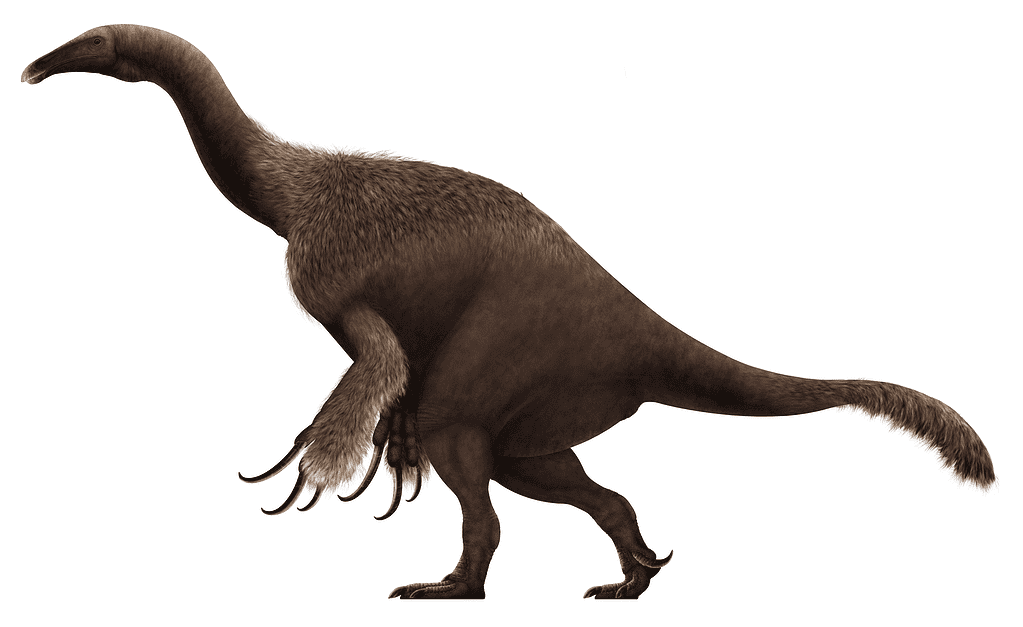
Discovery and History
In 1948, a Mongolian field expedition unearthed the first Therizinosaurus fossils in the Gobi Desert. Paleontologist Evgeny Maleev later formally described it in 1954. Initially, based solely on its large claw bones, Maleev suggested it was a turtle-like reptile. This proved to be a misconception due to the fragmentary remains. Subsequent findings in the 1960s and 1970s added limbs and other bones to the picture, gradually shifting the perception of Therizinosaurus from a reptilian oddity to a fully recognized dinosaur.
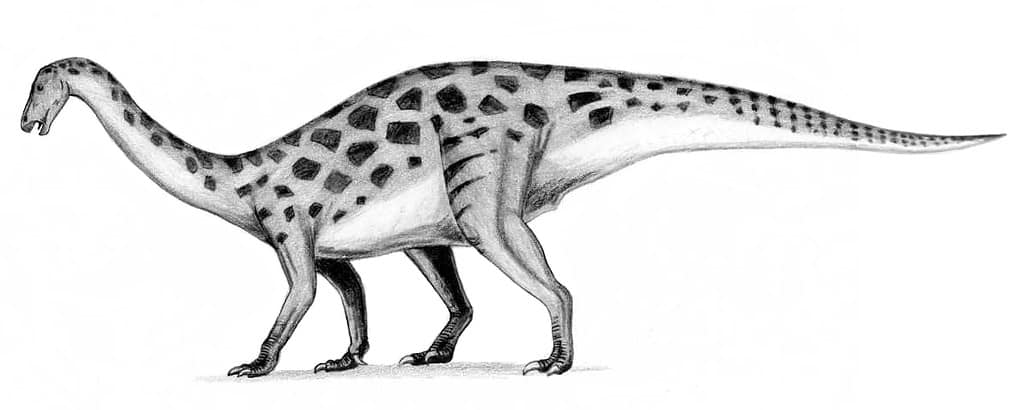
The genus is primarily known from these few but distinctive bones, with its massive manual unguals (claw bones) being particularly notable. Early interpretations varied wildly, with some scientists suggesting it could have been a sauropodomorph or ornithischian. However, the discovery of related therizinosaurids later helped clarify its place as a theropod, albeit one with unique adaptations.
Description
Therizinosaurus is the largest therizinosaurid. It reached lengths of 9-10 meters and stood 4-5 meters tall, weighing over 5 tons. Its defining features were a long neck, wide torso, and a beaked mouth, which reflect a body meant for high browsing. The neck would have allowed it to reach foliage other dinosaurs could not, while its wide torso suggests a large digestive tract necessary for processing plant material. It likely moved slowly, relying on its size, claws, and possibly social behavior for protection.
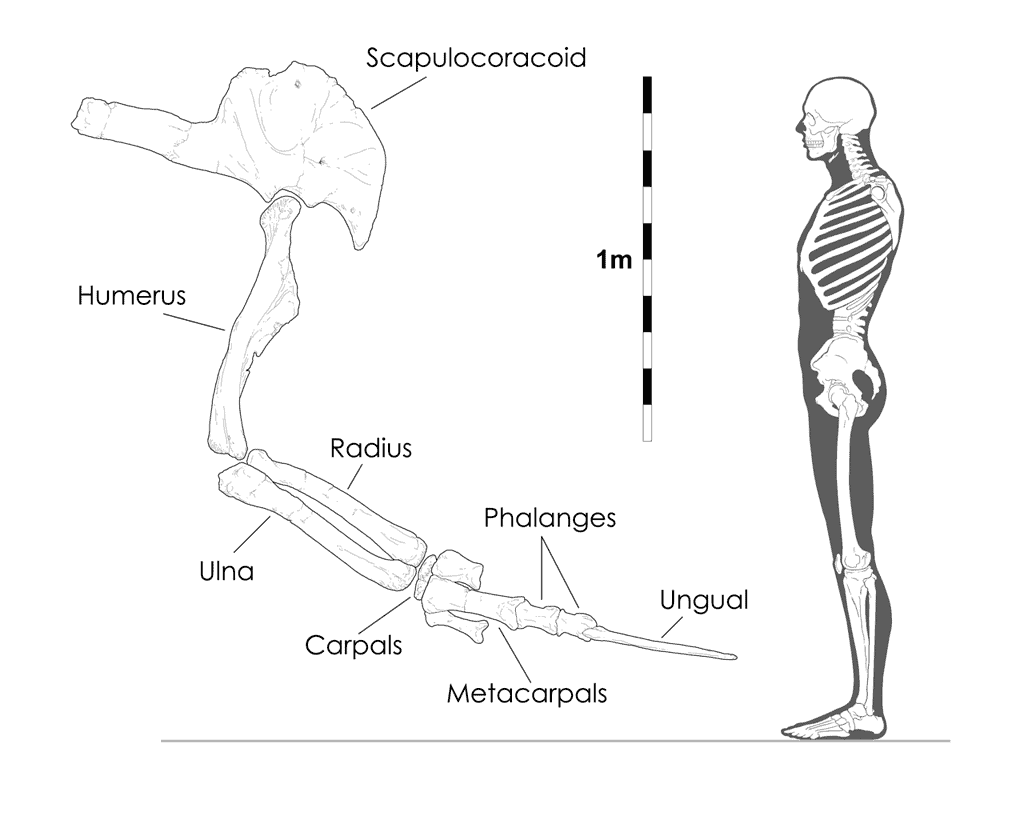
Unlike other theropods, Therizinosaurus’ arms were robust, supporting three fingers each ending in enormous, stiffened claws, measuring over 50 cm. These claws are the longest known of any land animal. Unlike a predator’s sharp talons, Therizinosaurus likely used its claws for foraging, not hunting prey. This aligns with the broader understanding of the Therizinosauridae family as primarily plant-eaters.
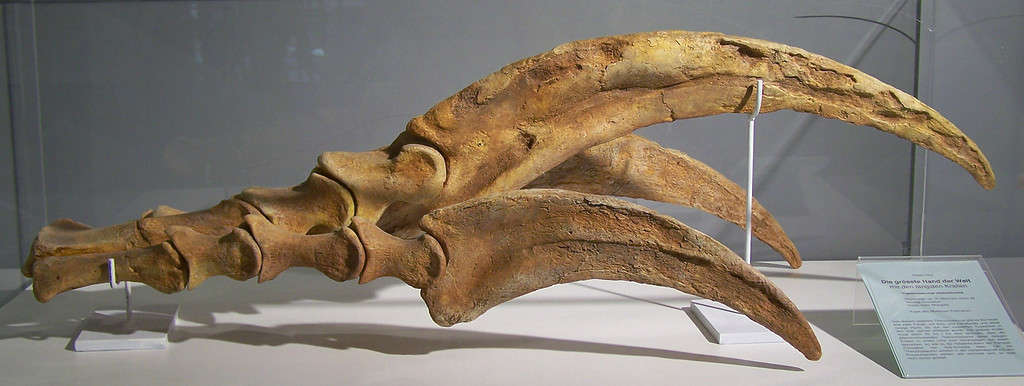
The hindlimbs ended in four weight-bearing toes, diverging from the typical theropod foot structure for a stable feeding posture. Its skeletal structure, inferred from related therizinosaurids and limited fossil evidence, points to a creature with sparse feathering, a heavily pneumatized vertebral column, and a backward-oriented pelvis.
Lifestyle and Behavior
Therizinosaurus’ physical attributes suggest a lifestyle quite unlike that of other theropods. Its gigantic claws, previously a source of much speculation, are now believed to have been used more for vegetation management than predation. This aligns with the theory that, despite its fearsome appearance, Therizinosaurus was primarily herbivorous. The claws likely served to pull branches closer or strip leaves, facilitating a diet of high foliage.

Its limb structure and massive body indicate that Therizinosaurus did not rely on speed for defense or foraging. Despite its herbivorous diet, the role of Therizinosaurus‘ claws in defense cannot be entirely discounted. While their primary function appears to have been for foraging, their sheer size may have made them effective against predators looking to score a kill.
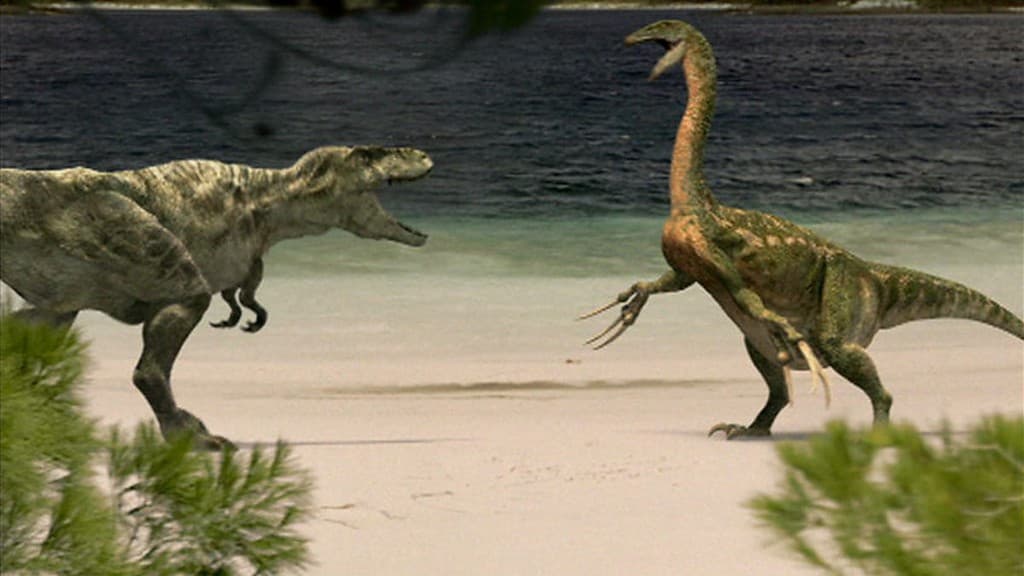
The social behavior of Therizinosaurus remains a subject of debate, with limited evidence to suggest whether it was solitary or gregarious. However, the presence of other large herbivores in the same habitat raises the possibility of some level of social interaction, whether competitive or cooperative.
Paleoecology
Therizinosaurus lived in the Nemegt Formation in the Gobi Desert of Mongolia. Dated to the Late Cretaceous period, approximately 70 million years ago, this region offered a diverse and rich ecosystem for Therizinosaurus and its contemporaries. The environment featured large rivers and extensive forested areas. The climate of the Nemegt Formation was temperate, with seasonal variations that included wet summers and dry winters.
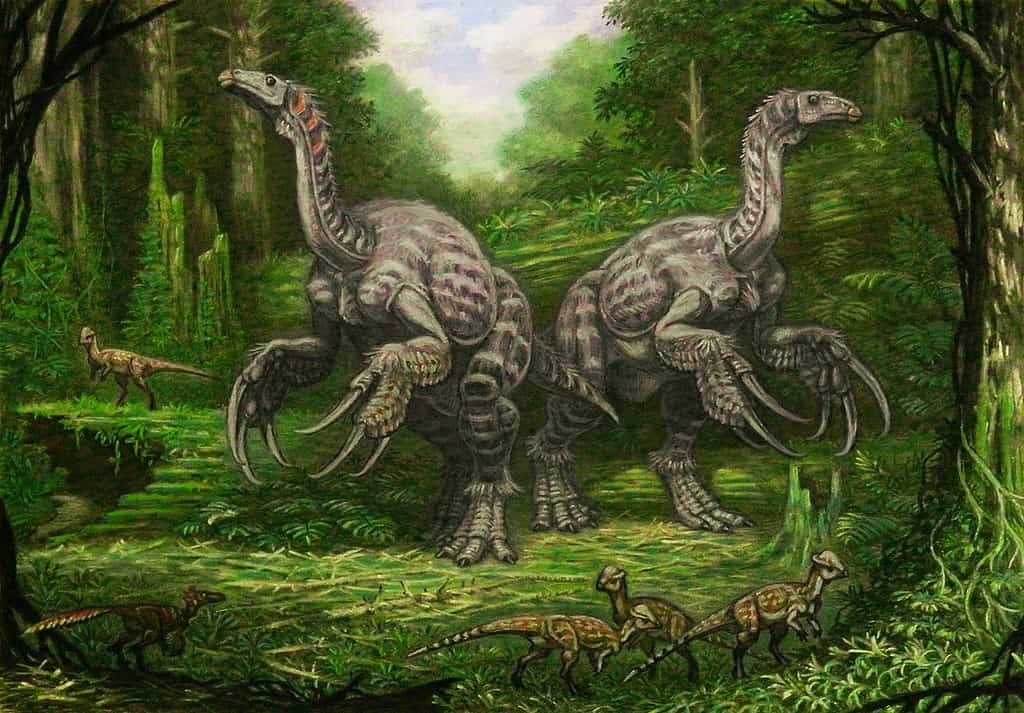
The formation is also known for its diversity of dinosaur species. Therizinosaurus shared its environment with the large theropod Tarbosaurus, which might have preyed upon Therizinosaurus, and the gigantic ornithomimosaur Deinocheirus. Other notable contemporaries include Gallimimus, Saurolophus, Gigantoraptor, Alioramus, Nemegtosaurus, Tarchia, and Homalocephale.
Therizinosaurus in Popular Culture
Therizinosaurus has made notable appearances in various media. Its distinct characteristics, especially its towering size and long claws, have made it a fascinating subject for depiction in films, television series, and documentaries.
Movies & Documentaries
In “Jurassic World Dominion”, Therizinosaurus made its on-screen debut, stalking and almost killing Claire Dearing. She managed to escape by submerging herself in a pond. Later, Therizinosaurus joined forces with Rexy, the T. Rex, to confront the Giganotosaurus. In a climactic battle, Rexy pushes the Giganotosaurus into Therizinosaurus’ lethal claws, resulting in the Giga’s death.

“The Dino King” is a CGI animated film that follows the life of a Tarbosaurus named Speckles. Therizinosaurus appears as a menacing antagonist, being incredibly hostile towards a curious juvenile Speckles right before his family saves him. Later in the movie, Therizinosaurus is even featured fighting a Tyrannosaurus to the death.
In “Prehistoric Planet” Season 1, juvenile Therizinosaurus were depicted attempting to climb up to a beehive. This scene from the episode “Forests” illustrates their speculated behavior and diet in a natural setting.
In “Chased by Dinosaurs”, in an episode titled “The Giant Claw”, Nigel Marven searches for Therizinosaurus in Cretaceous Mongolia. He initially believes it to be a huge carnivore due to its massive claws but discovers that Therizinosaurus is actually a giant plant-eating theropod. Throughout his journey, Marven encounters various other dinosaurs, including Saurolophus, Protoceratops, Mononykus, Velociraptor, and Tarbosaurus, before finally finding the Therizinosaurus and learning of its true nature.
Video Games
In “ARK: Survival Evolved”, Therizinosaurus is depicted as a versatile dinosaur, capable of both “Delicate Harvesting” and “Power Harvesting”. These abilities allow it to collect a wide range of resources efficiently, from wood and meat to berries and fiber, making it highly valued for farming purposes within the game. Its aggressive nature means players must approach it with caution, employing strategic taming methods to convert it from a threat to a powerful ally.
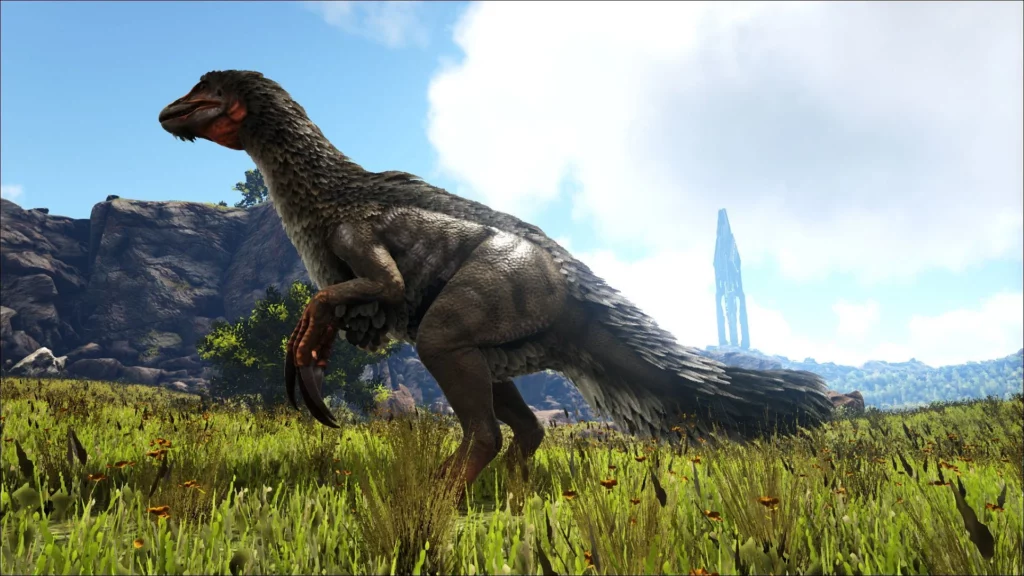
In “Dino Crisis”, Therizinosaurus is encountered in the Facility B3 area, posing a significant challenge to players. It uses its large and strong jaws to grab Regina and throw her against walls or the floor, showcasing its strength and aggressiveness. Neither video games depict Therizinosaurus scientifically accurate.






